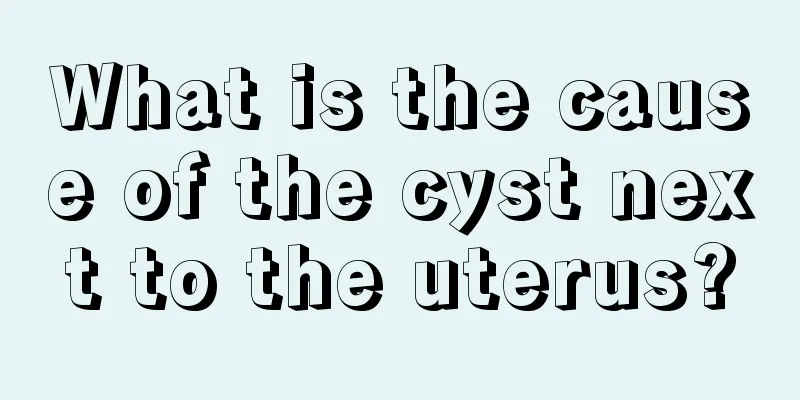What is the cause of the cyst next to the uterus?

|
The uterus is a very important reproductive organ for women and is also an area that is prone to various lesions. A typical case is uterine cyst, a gynecological disease that mainly occurs in the uterine cavity. Many women find cysts near their uterus during physical examinations and become very worried and want to know the cause. So, what is the matter with the cyst next to the uterus? Let’s take a closer look at it below. Cervical cyst is a pathological manifestation of chronic cervicitis. During the healing process of cervical erosion, the newly formed squamous epithelium covers the openings of the cervical glandular ducts or extends into the glandular ducts, blocking the openings of the glandular ducts. The hyperplasia of connective tissue or scar formation around the glandular duct compresses the glandular duct, causing it to narrow or even block it. The drainage of glandular secretions is obstructed and retained, forming a cyst called a cervical nabothian cyst. The cysts vary in size, but are generally small and scattered. It can appear alone or in multiples. In chronic cervicitis, the cervical glands and surrounding tissues proliferate. When the gland duct is squeezed by the surrounding tissue and the gland opening is blocked, the secretions in the gland cannot flow out and are retained inside, causing the gland cavity to expand and form cystic tumors of varying sizes, called "cervical gland retention cysts", also known as Nabot cysts. Cervical cyst is a type of chronic cervicitis, which generally has no obvious symptoms. The main symptom of chronic cervicitis is increased vaginal discharge. Due to different pathogens, the color and amount of vaginal discharge are also different. Leucorrhea may be mucous or purulent, sometimes with streaks of blood or a small amount of blood, and may also cause contact bleeding. Pain often occurs in the lower abdomen or lumbosacral area, and pelvic pain or dysmenorrhea may occur, which is often aggravated during menstruation, bowel movements or sexual intercourse. In addition, irregular menstruation and infertility may occur. The above is an introduction to what happens when there is a cyst next to the uterus. I hope it will be helpful for patients to understand. There are many factors that cause cysts near the uterus. This is a relatively common gynecological disease. After becoming ill, it is best to pay attention to it, go to a regular gynecological hospital, adopt relevant technologies, and treat uterine cysts as soon as possible to avoid more serious consequences to our health. |
<<: What to do if polyps grow in the uterus
>>: What are the symptoms of an anteroposterior uterus?
Recommend
What are the remedies for postpartum joint pain?
Many women need to take a confinement period to r...
If I have a medical abortion for 7 days and it is clean, will I get infected if I have sex with someone 17 days
Pregnancy is supposed to be a very happy thing, b...
What happens if you drink too much red wine? How to sober up after drinking too much red wine
Fragrant red wine is a favorite of many people, a...
When is the pregnancy test effective?
Many friends do not understand the best time to u...
Advantages of physical therapy for cervical erosion
Cervical erosion is a particularly serious gyneco...
Help, I can't control my appetite during the holidays? Here is a weight control recipe that won't make you hungry or gain weight →
For many people, losing weight is a lifelong purs...
Can social security be delayed during the epidemic? What should I do about social security during the epidemic?
Can social security be delayed during the epidemi...
What is the most effective way to treat dysmenorrhea?
Dysmenorrhea is a common symptom among women. The...
How many times should the fallopian tube be intubated? Women must know
Whether a woman's fallopian tubes are unobstr...
Can I still have sex after having my uterus removed?
The uterus is the most important part of a woman&...
What should I prepare before getting pregnant?
A newly married young woman, who has just become ...
Woman always feels cold on back
Sometimes, the temperature is very warm, but you ...
Treatment of Polycystic Ovary Syndrome with Traditional Chinese Medicine
Polycystic ovary syndrome is also known as PCOS. ...
Is it true that the more spicy food a place has, the more anorectal hospitals there are?
Local climate and soil nurture local people, but ...
What does delayed menstruation have to do with?
We all know that many women in life will experien...









